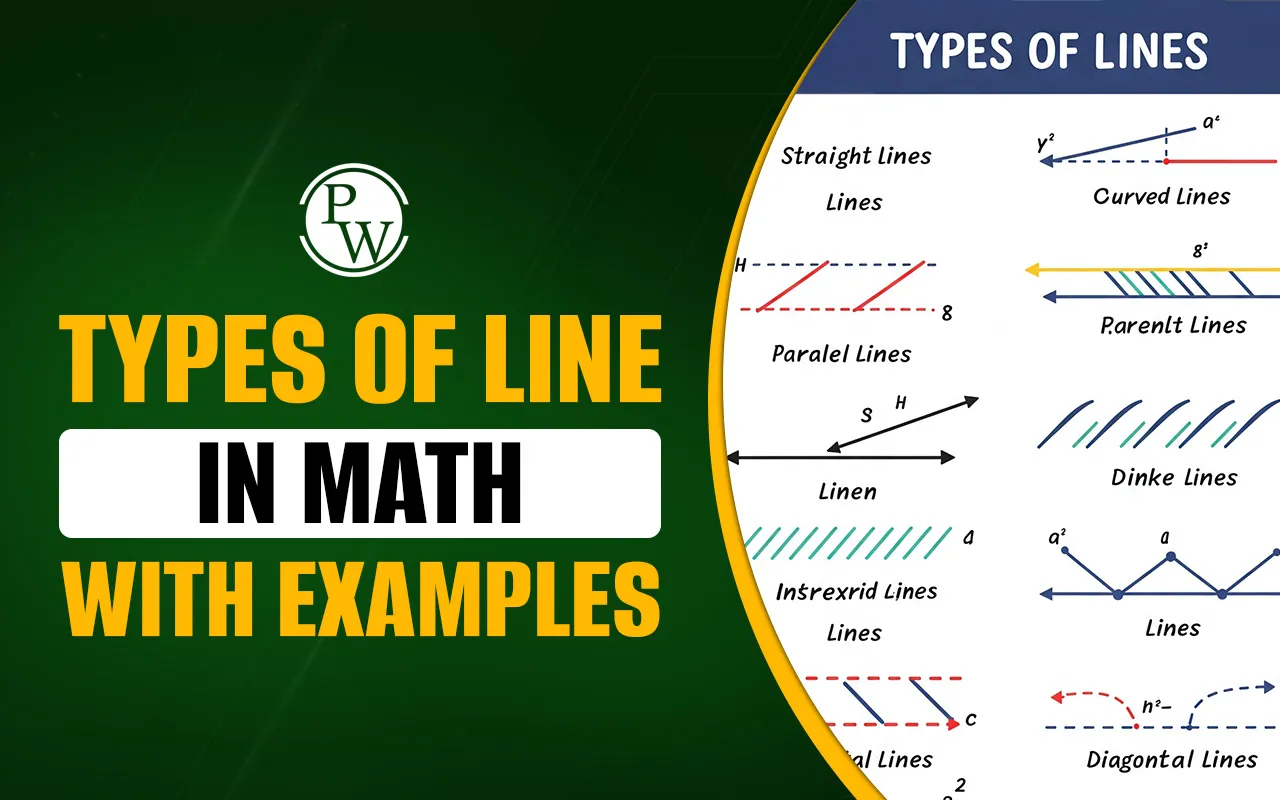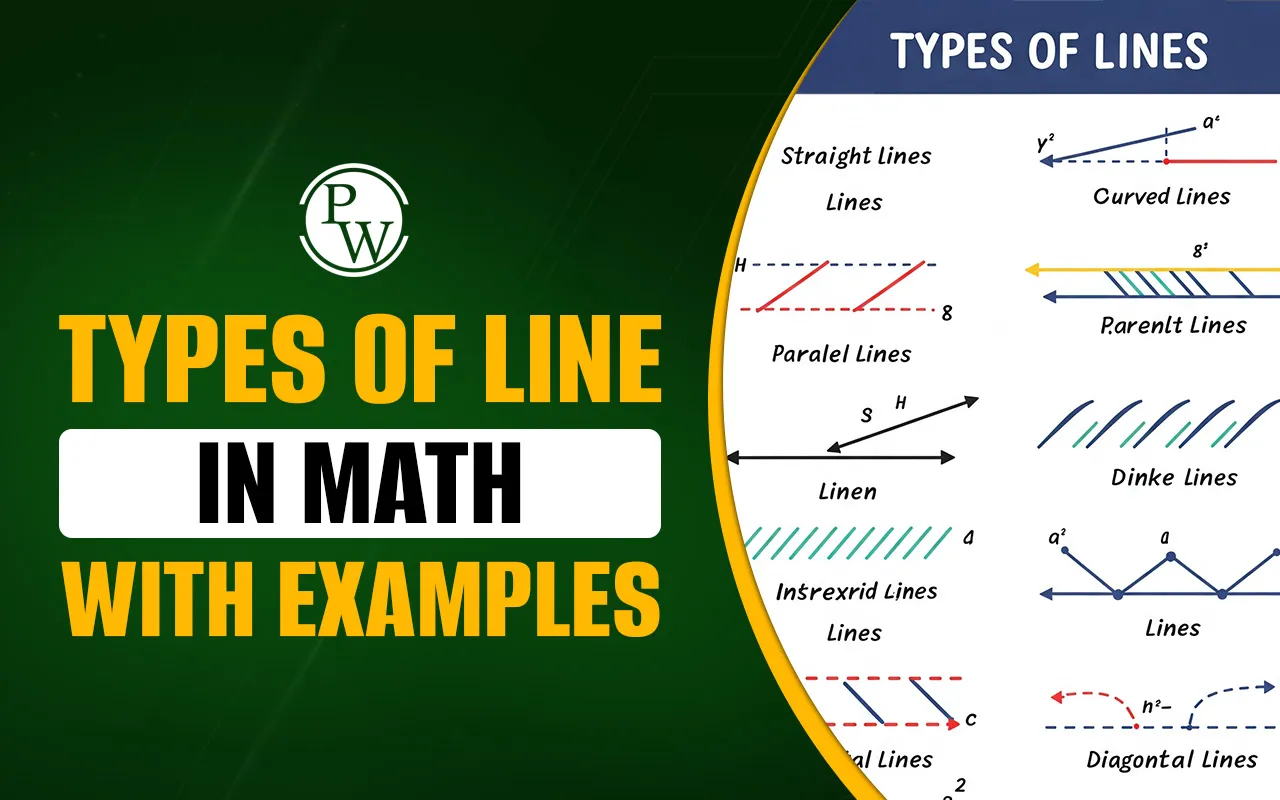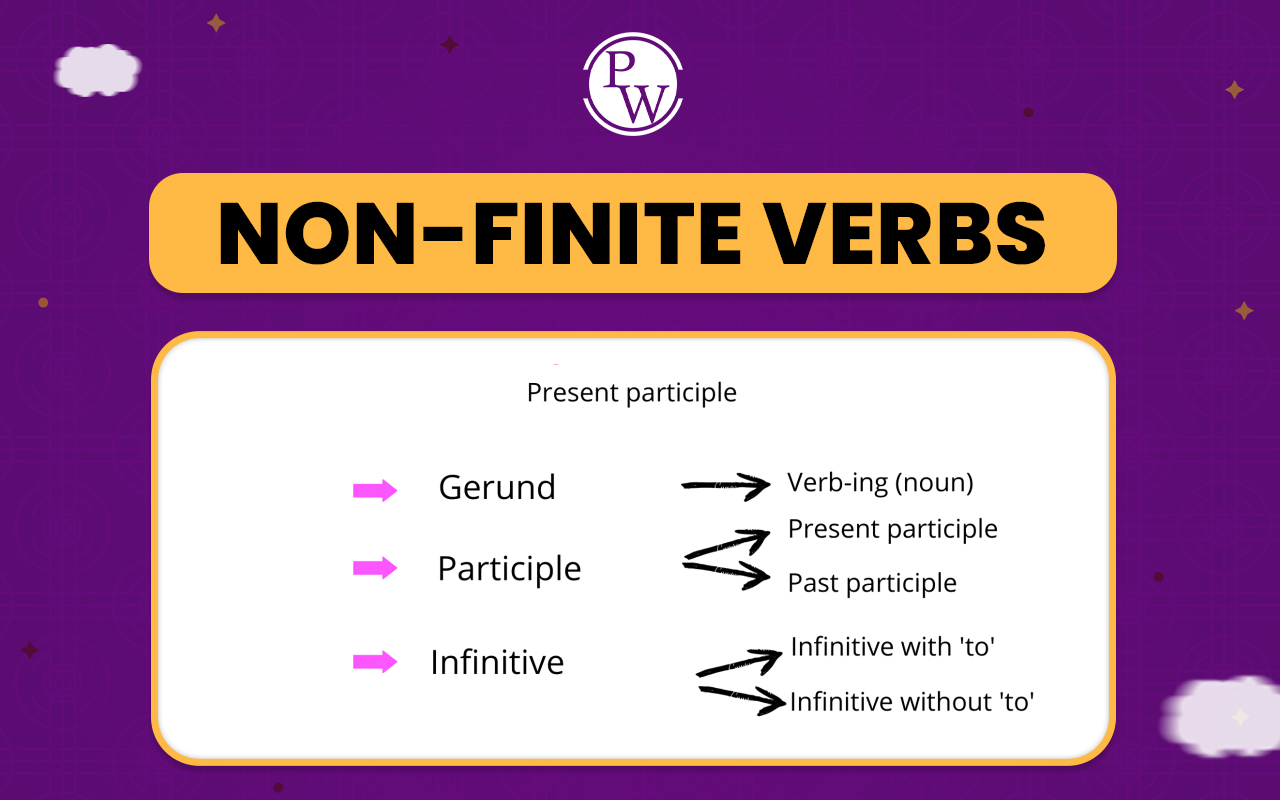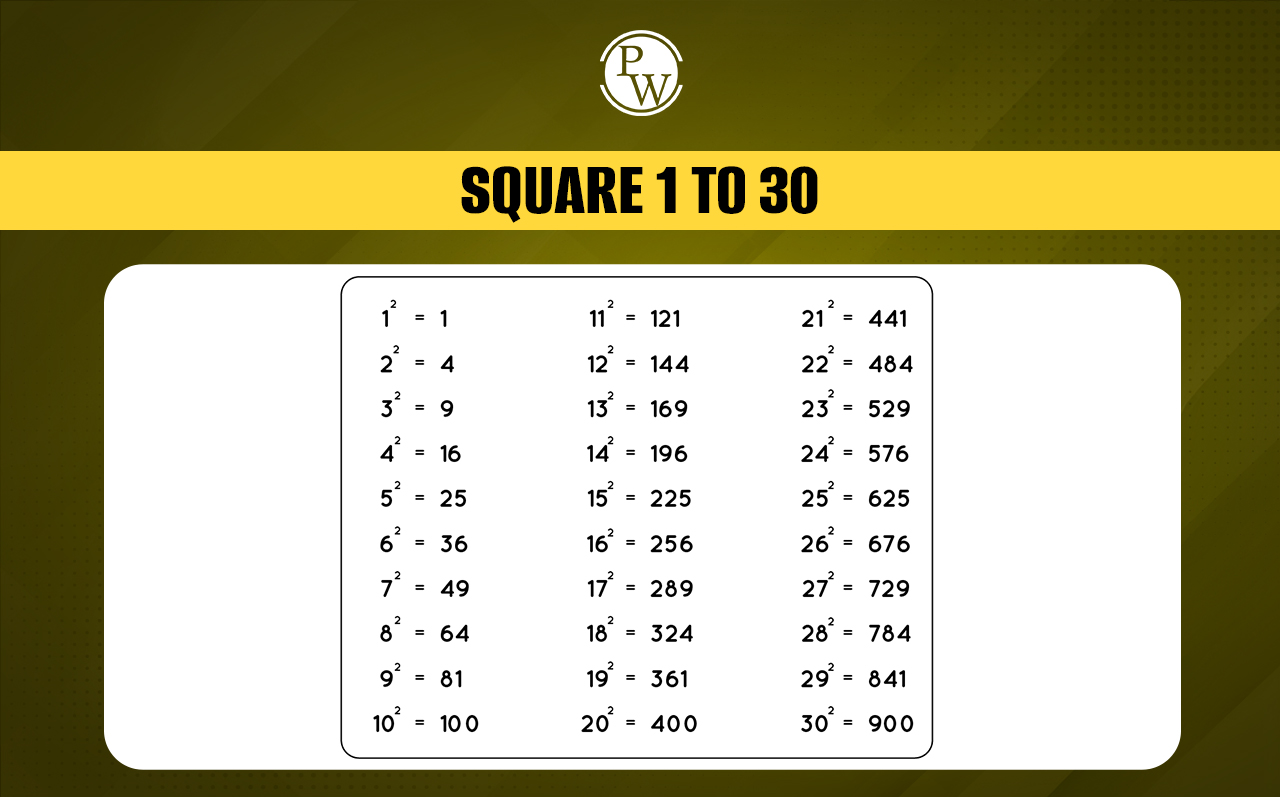

Types of Lines: A line is a one-dimensional figure made of points that extends endlessly in both directions. Lines are used to form shapes, measure distances, and describe positions. There are different types of lines, each with its own features. In this blog, you will learn about these types and their applications in detail.
Read More: Equation
Type of Lines
A line can be different types like a straight line, curved line, or zigzag line. But in math, we mainly focus on straight lines and their special kinds, such as parallel or perpendicular lines.
What is Line?
To understand the different types of lines, it’s important to first know what a line is. In mathematics, a line is a one-dimensional figure made up of a continuous collection of points. It has length but no width or thickness. A line extends endlessly in both directions, and it cannot be measured because it has no endpoints.
This leads us to the line definition in maths:
A line is an infinite set of points that continues forever in both directions. It is typically shown as a straight path with arrowheads on both ends to indicate its infinite nature.
How Many Types of Lines?
There are many types of lines in math, but the most common ones are straight lines, parallel lines, perpendicular lines, intersecting lines, horizontal lines, and vertical lines. Each type behaves differently.
Types of Lines in Math
In math, lines are straight paths that go on forever in both directions. There are many types of lines, and each type has special features that help us understand shapes and angles better.
Different Types of Lines
Different types of lines include parallel lines that never meet, perpendicular lines that cross at right angles, and intersecting lines that meet but not at right angles. These help us solve many math problems.
Types of Lines and Their Names
The main types of lines and their names are straight line, parallel lines, perpendicular lines, intersecting lines, horizontal line, and vertical line. Learning their names helps us easily describe shapes and figures in math.
What is a Ray?
A ray is a part of a line that begins at a fixed point and extends endlessly in one direction. It has a starting point but no endpoint. Rays are often used to represent light or direction in geometry.
For example, if a ray starts at point A and passes through point B, it is written as ray AB. It begins at A and continues infinitely beyond B in that direction.
What is a Line Segment?
A line segment is a portion of a line that has two distinct endpoints. Unlike a full line, which goes on forever, a line segment has a definite length and can be measured.
For example, if a segment begins at point A and ends at point B, it is simply written as segment AB. It includes all the points between A and B and stops at those two points.
How Many Types of Lines Are There in Maths?
You might wonder, how many types of lines are there in maths? The answer depends on how you classify them. Lines can be grouped by:
-
Structure or Shape (e.g., straight or curved
-
Orientation (e.g., horizontal, vertical, or diagonal)
-
Interaction with Other Lines (e.g., parallel, perpendicular, or intersecting)
-
Special Geometric Roles (e.g., tangent, secant, symmetry)
Altogether, we commonly study at least 12–15 types of lines in math, depending on how deeply we explore the subject.
Read More: Quadrilateral
Types of Lines Based on Shape and Structure
Lines can be identified by their form. Some follow a straight path, while others curve, bend sharply, or appear broken. Let’s understand each type in brief:
Straight Lines: A straight line travels in the same direction without any curves or bends. It has a constant slope and extends forever. All traditional lines in algebraic graphs are straight lines. They are the most common and fundamental type of line.
Curved Lines: Unlike straight lines, curved lines change direction gradually. They may form parts of circles, spirals, or irregular arcs. A curved line does not follow a linear path and is found in objects like the edges of a circle or an ellipse.
Zig-Zag Lines: These lines consist of straight segments joined at angles, with sudden shifts in direction, typically alternating between positive and negative slopes. These lines are not smooth and often represent sharp or sudden movement in art or graphing.
Broken or Dashed Lines: A broken line or dashed line is made of short line segments placed with gaps between them. These are often used in diagrams to indicate hidden or temporary boundaries.
Read More: Median of a Triangle
Types of Lines in Math Based on Orientation
Lines can also be classified by the direction they extend, such as horizontally, vertically, or diagonally across a plane. Let’s understand each type in brief:
Horizontal Lines: A horizontal line runs from left to right and is parallel to the x-axis. In algebra, horizontal lines are represented by equations of the form y = constant. They indicate no change in vertical position.
Vertical Lines: A vertical line goes up and down, parallel to the y-axis. Its algebraic form is x = constant. Vertical lines show no change in horizontal position.
Diagonal Lines: Also called oblique lines, diagonal lines slant between horizontal and vertical directions. They can be seen in figures like rectangles and parallelograms, connecting opposite corners.
Types of Lines Based on Intersection
Now let’s look at the types of lines that are defined by how they interact with each other.
Intersecting Lines: Intersecting lines are two or more lines that cross at a common point. This point is called the point of intersection. These lines form angles when they meet and are crucial in geometry and graphing.
Perpendicular Lines: Perpendicular lines are a specific type of intersecting lines. They meet at a 90-degree angle (a right angle). The product of their slopes is always -1, e.g., one line with a slope of 2 is perpendicular to a line with slope –½.
Parallel Lines: Parallel lines never meet, no matter how far they are extended. They remain the same distance apart at every point. Algebraically, they have equal slopes but different y-intercepts (e.g., y = 2x + 1 and y = 2x – 3).
Transversal Lines: A transversal is a line that intersects two or more other lines. When a transversal crosses parallel lines, it forms angles such as alternate interior, alternate exterior, corresponding, and consecutive interior angles.
Bisecting Lines: A bisecting line cuts another line segment or angle into two equal parts. It's commonly used in constructions and proofs in geometry.
Special Types of Lines in Geometry
Besides standard classifications, geometry also includes special types of lines that perform unique roles.
Tangent Lines: A tangent line touches a curve at exactly one point and does not cross it. This concept is important in calculus, where it represents the instantaneous rate of change (slope) at that point.
Secant Lines: Unlike tangents, a secant line intersects a curve at two or more distinct points. For instance, a secant line can pass through a circle and connect two points on its circumference.
Skew Lines: Skew lines exist in three-dimensional space. They do not intersect and are not parallel. Since they lie in different planes, they never meet. They are studied in 3D geometry, especially in structural design.
Lines of Symmetry: A line of symmetry divides a shape into two mirror-image halves. These lines are often found in geometric figures like squares, circles, and some triangles. Understanding symmetry helps in pattern design, folding, and reflection.
Looking for an online math class to help your child stay engaged and learn step by step? CuriousJunior online classes can be the perfect way to make math learning easy and interesting. Our interactive story-based teaching helps children enjoy what they learn. Book a demo today.













